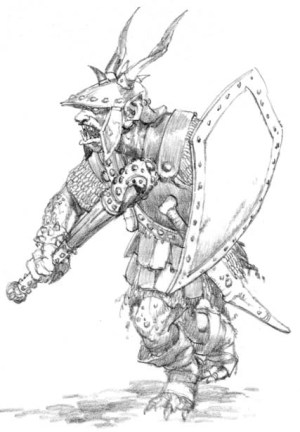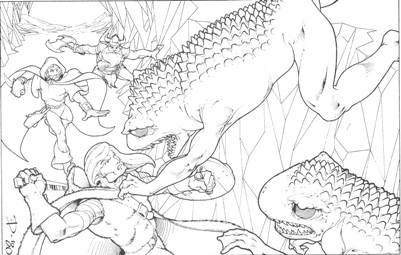Art of the Genre: The Fighter

I guess at our very core there’s a fighter in all of us. It’s probably the reason why Jon Schindehette over at ArtOrder was so surprised with the response to his art request for an ultimate fighter art composition. People just plain like human fighters, and the numbers involved in the impetus of the competition hold to that fact.
Certainly, the groundwork for many a gamer starts with the fighter. He’s essentially the ‘easy one’, the character class you give the new player because all you have to do is swing a weapon and hope the dice are lucky. There are no magic spells to learn, no prayer lists, holy symbols, or thieves tools. It’s just put on some armor, grab a sword, and go, and you know, I really love that!
So, when I started my rather epic quest in the realms of RPGs, just like discussed in my discourse on Basic D&D’s Red Box, I of course played a fighter. As a matter of fact, I was so obviously unoriginal, I stole Frank Mentzer’s Sir Fleetwood name example right along wth Jeff Easley’s image for the fighter I wanted to play and went from there.










